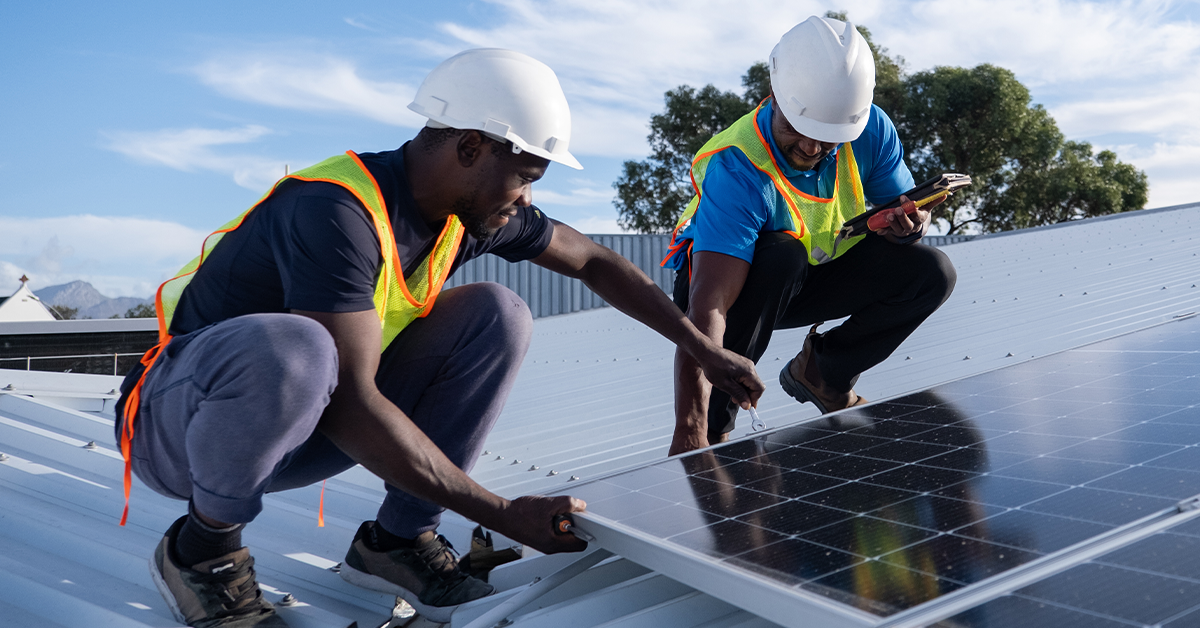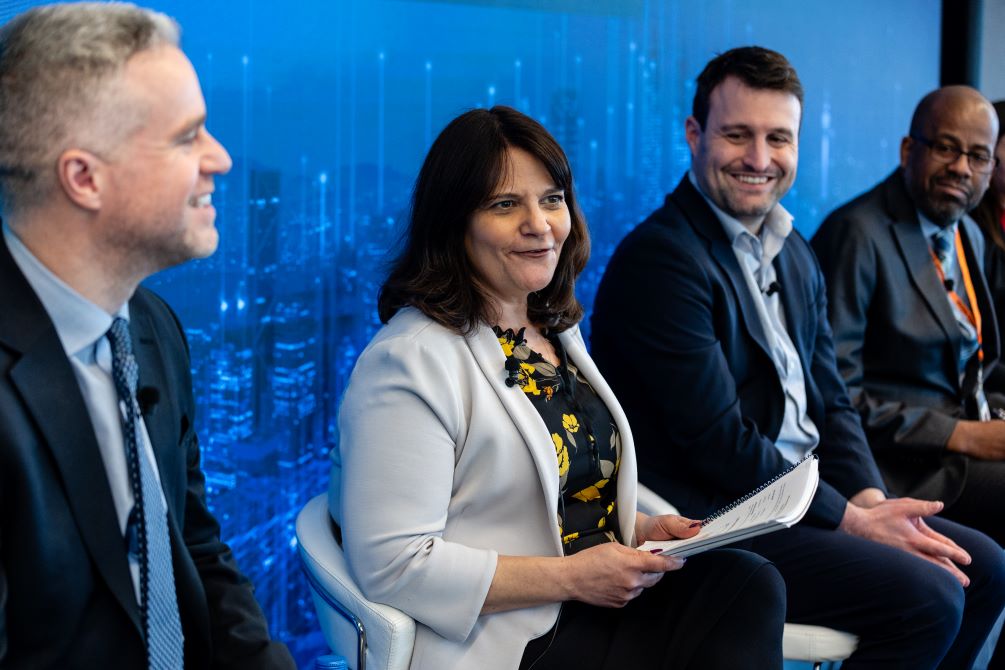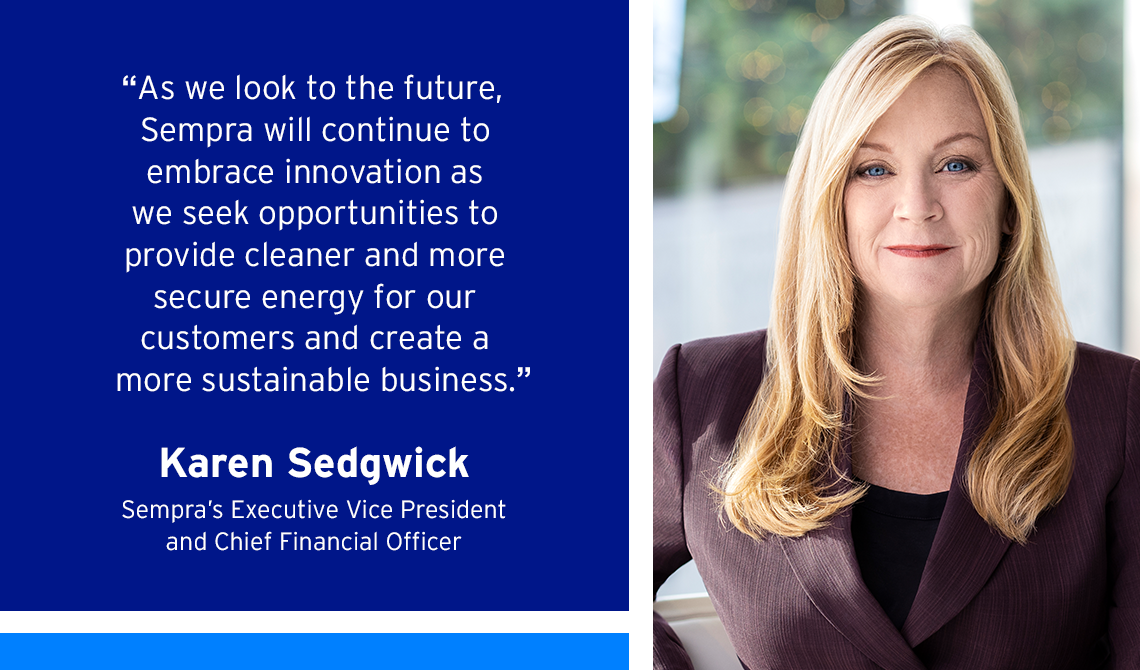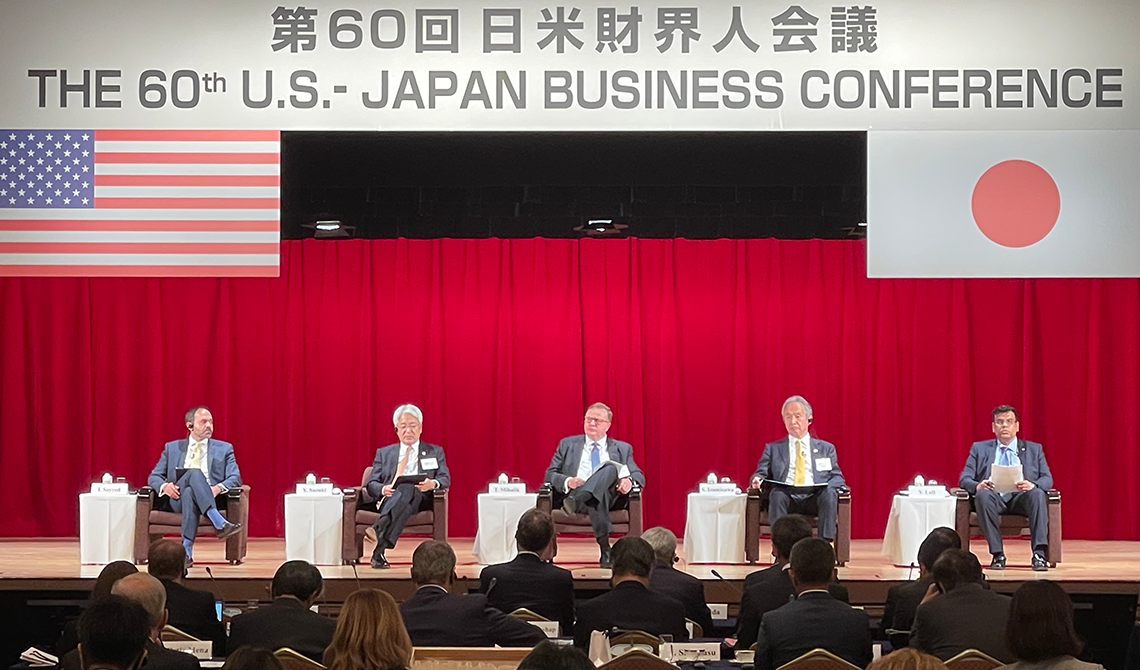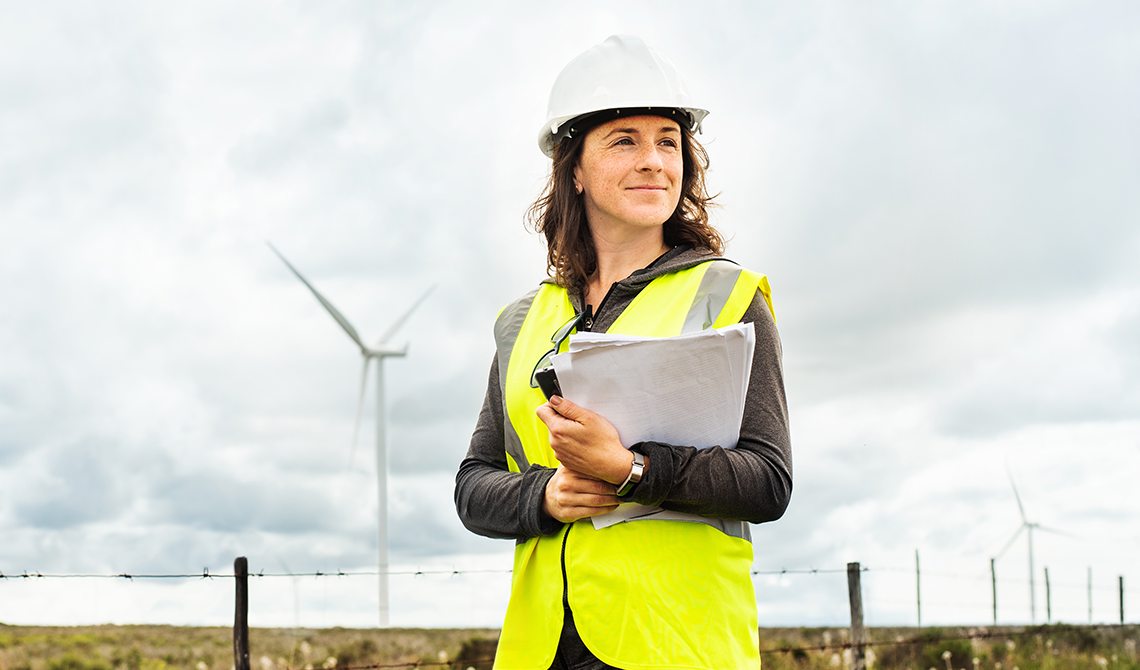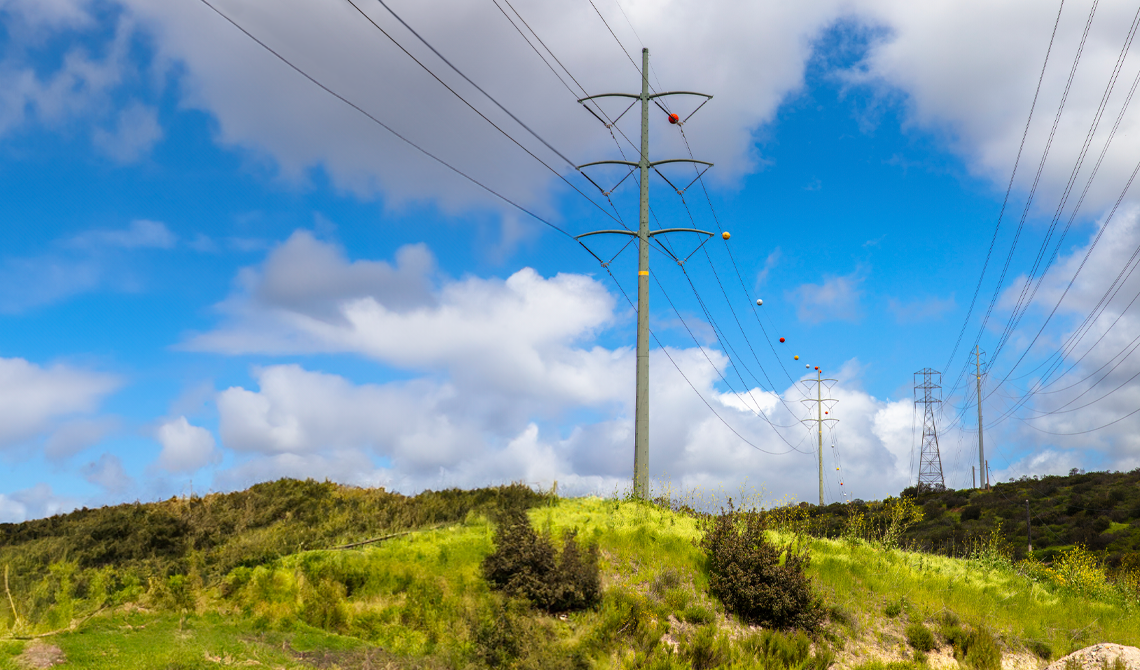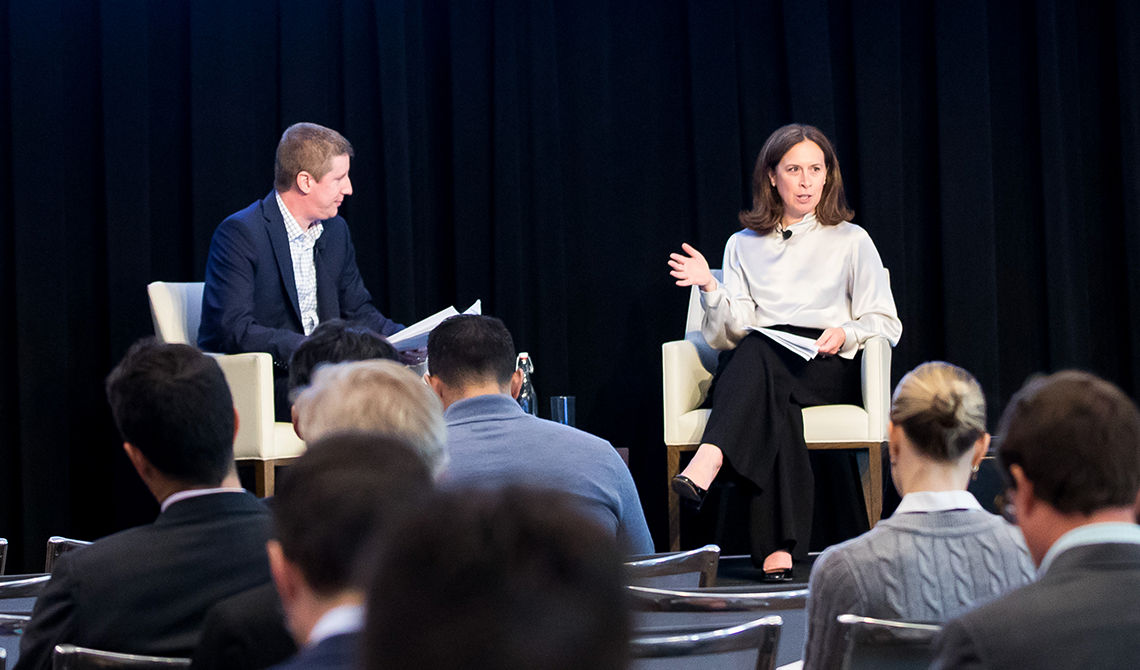According to data from the Business Council for Sustainable Energy, interest in hydrogen is on the rise since the passage of the Inflation Reduction Act. The organization’s Sustainable Energy in America Factbook states, “Interest in ‘clean’ US hydrogen is growing. About 92MW of new electrolyzers were shipped in 2022, but the number is expected to be much more this year.”
The case for clean hydrogen
Hydrogen is a versatile and abundant element that has the potential to support the transition towards a clean energy future because it can be produced and consumed with zero emissions. With a focus on innovation and sustainability, the Sempra family of companies is advancing more than 20 hydrogen research and development projects aiming to enhance grid resilience and help decarbonize the economy.
Clean hydrogen can be produced using renewable energy sources such as wind or solar to power an electrolyzer that generates pure hydrogen gas from water. This method of hydrogen production is gaining increasing attention because it does not produce greenhouse gas emissions and can therefore play a key role in the transition to cleaner energy.
Across our companies, Sempra is collaborating with strategic research partners in the energy, academic and policy sectors, jointly funding nearly $140 million in the last two years for research, development and demonstration initiatives in the areas of cleaner fuels, hydrogen technology and infrastructure.
Angeles Link
One of the most notable initiatives in the country is being led by Southern California Gas Company (SoCalGas). The proposed Angeles Link was announced in 2022 and could be the nation’s largest green hydrogen energy infrastructure system. The proposal has the potential to supply cleaner energy to hard-to-electrify sectors like trucking and industrial processes within Southern California. By facilitating the replacement of diesel-powered heavy-duty trucks with hydrogen fuel cell trucks, the initiative aims to help displace up to three million gallons of diesel a day and eliminate nearly 25,000 tons of smog per year.
[H2] Innovation Experience
One of SoCalGas’ most notable programs is the [H2] Innovation Experience (H2IE). The project has been recognized as a World-Changing Idea for being among the first of its kind in the U.S. to demonstrate how renewable electricity can be used to create carbon-free gas and for illustrating the crucial role hydrogen is playing in contributing to the state’s carbon neutrality objectives.
Located in Downey, California, H2IE is the first clean hydrogen powered microgrid and home in North America. The nearly 2,000 square-foot structure utilizes several advanced renewable energy technologies to generate power from solar panels, store excess energy and convert it back into electricity as needed via an onsite hydrogen fuel cell. Through H2IE, SoCalGas has demonstrated both the resiliency and reliability of renewable hydrogen technology and its potential to support self-sustainable homes and neighborhoods.
Palomar Energy Center — electric generation and fleet fueling
San Diego Gas & Electric (SDGE) is developing innovative pilot projects to show hydrogen’s potential to support a carbon-free, reliable electric system as California transitions to 100% clean electricity by 2045.
At Palomar Energy Center in Escondido, California, SDGE is installing dedicated solar panels and an electrolyzer to support onsite clean hydrogen production. The hydrogen will be used in three ways: (1) blended with natural gas as a feedstock for electricity generation, (2) as a cooling gas for onsite generators, and (3) to power the first hydrogen fuel cell vehicles in SDGE’s fleet.
Sempra and its businesses are dedicated to developing innovative hydrogen programs and solutions to help diversify and decarbonize energy infrastructure — all part of Sempra’s energy transition action plan. We aspire to pave the way to a better future for all by investing in clean hydrogen initiatives that have the potential to diversify, digitalize and decarbonize our infrastructure.
This article contains statements that constitute forward-looking statements within the meaning of the Private Securities Litigation Reform Act of 1995. Forward-looking statements are based on assumptions with respect to the future, involve risks and uncertainties, and are not guarantees. Future results may differ materially from those expressed or implied in any forward-looking statement. These forward-looking statements represent our estimates and assumptions only as of the date of this article. We assume no obligation to update or revise any forward-looking statement as a result of new information, future events or otherwise. In this article, forward-looking statements can be identified by words such as “believes,” “expects,” “intends,” “anticipates,” “contemplates,” “plans,” “estimates,” “projects,” “forecasts,” “should,” “could,” “would,” “will,” “confident,” “may,” “can,” “potential,” “possible,” “proposed,” “in process,” “construct,” “develop,” “opportunity,” “initiative,” “target,” “outlook,” “optimistic,” “poised,” “maintain,” “continue,” “progress,” “advance,” “goal,” “aim,” “commit,” or similar expressions, or when we discuss our guidance, priorities, strategy, goals, vision, mission, opportunities, projections, intentions or expectations.
Factors, among others, that could cause actual results and events to differ materially from those expressed or implied in any forward-looking statement include risks and uncertainties relating to: California wildfires, including potential liability for damages regardless of fault and any inability to recover all or a substantial portion of costs from insurance, the wildfire fund established by California Assembly Bill 1054, rates from customers or a combination thereof; decisions, investigations, inquiries, regulations, issuances or revocations of permits, consents, approvals or other authorizations, renewals of franchises, and other actions by (i) the California Public Utilities Commission (CPUC), Comisión Reguladora de Energía, U.S. Department of Energy, U.S. Federal Energy Regulatory Commission, Public Utility Commission of Texas, and other governmental and regulatory bodies and (ii) the U.S., Mexico and states, counties, cities and other jurisdictions therein and in other countries in which we do business; the success of business development efforts, construction projects and acquisitions and divestitures, including risks in (i) being able to make a final investment decision, (ii) completing construction projects or other transactions on schedule and budget, (iii) realizing anticipated benefits from any of these efforts if completed, and (iv) obtaining the consent or approval of third parties; litigation, arbitrations, property disputes and other proceedings, and changes to laws and regulations, including those related to the energy industry in Mexico; cybersecurity threats, including by state and state-sponsored actors, of ransomware or other attacks on our systems or the systems of third-parties with which we conduct business, including the energy grid or other energy infrastructure, all of which have become more pronounced due to recent geopolitical events; our ability to borrow money on favorable terms and meet our obligations, including due to (i) actions by credit rating agencies to downgrade our credit ratings or place those ratings on negative outlook or (ii) rising interest rates and inflation; failure of foreign governments, state-owned entities and our counterparties to honor their contracts and commitments; the impact on affordability of San Diego Gas & Electric Company’s (SDG&E) and Southern California Gas Company’s (SoCalGas) customer rates and their cost of capital and on SDG&E’s, SoCalGas’ and Sempra Infrastructure’s ability to pass through higher costs to customers due to (i) volatility in inflation, interest rates and commodity prices, (ii) with respect to SDG&E’s and SoCalGas’ businesses, the cost of the clean energy transition in California, (iii) with respect to SDG&E’s business, departing retail load resulting from additional customers transferring to Community Choice Aggregation and Direct Access, and (iv) with respect to Sempra Infrastructure’s business, volatility in foreign currency exchange rates; the impact of climate and sustainability policies, laws, rules, regulations, disclosures and trends, including actions to reduce or eliminate reliance on natural gas, increased uncertainty in the political or regulatory environment for California natural gas distribution companies, the risk of nonrecovery for stranded assets, and our ability to incorporate new technologies; weather, natural disasters, pandemics, accidents, equipment failures, explosions, terrorism, information system outages or other events that disrupt our operations, damage our facilities or systems, cause the release of harmful materials or fires or subject us to liability for damages, fines and penalties, some of which may not be recoverable through regulatory mechanisms or insurance or may impact our ability to obtain satisfactory levels of affordable insurance; the availability of electric power, natural gas and natural gas storage capacity, including disruptions caused by failures in the transmission grid, pipeline system or limitations on the withdrawal of natural gas from storage facilities; Oncor Electric Delivery Company LLC’s (Oncor) ability to reduce or eliminate its quarterly dividends due to regulatory and governance requirements and commitments, including by actions of Oncor’s independent directors or a minority member director; changes in tax and trade policies, laws and regulations, including tariffs, revisions to international trade agreements and sanctions, such as those imposed in connection with the war in Ukraine, any of which may increase our costs, reduce our competitiveness, impact our ability to do business with certain counterparties, or impair our ability to resolve trade disputes; and other uncertainties, some of which are difficult to predict and beyond our control.
These risks and uncertainties are further discussed in the reports that Sempra has filed with the U.S. Securities and Exchange Commission (SEC). These reports are available through the EDGAR system free-of-charge on the SEC’s website, sec.gov, and on Sempra’s website, sempra.com. Investors should not rely unduly on any forward-looking statements.
Sempra Infrastructure, Sempra Infrastructure Partners, Sempra Texas, Sempra Texas Utilities, Oncor and Infraestructura Energética Nova, S.A.P.I. de C.V. (IEnova) are not the same companies as the California utilities, SDG&E or SoCalGas, and Sempra Infrastructure, Sempra Infrastructure Partners, Sempra Texas, Sempra Texas Utilities, Oncor and IEnova are not regulated by the CPUC.


